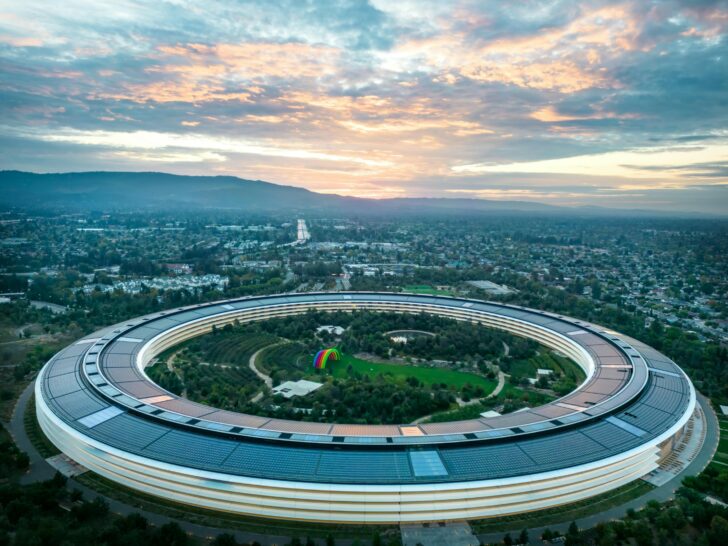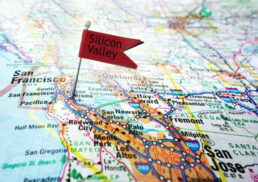Silicon Silicon Valley represents the birthplace of the modern tech industry, rooted in the use of silicon for semiconductors. This region has transformed from a semiconductor manufacturing hub into a global center for technological advancements. Find out how it all began and what makes Silicon Valley crucial in today’s tech world.
Table of Contents
Key Takeaways
Silicon Valley, originating from its semiconductor industry, remains a pivotal global center for technology and innovation, driven by a unique blend of skilled labor, abundant venture capital, and a culture of entrepreneurship.
Stanford University has played an instrumental role in Silicon Valley’s growth by fostering collaboration between academia and industry, facilitating the establishment of numerous successful tech startups.
Despite its success, Silicon Valley faces challenges such as high living costs and housing shortages, necessitating innovative solutions to maintain its status as a sustainable tech hub.
Silicon Silicon Valley: The Hub of Innovation and Technology

The term “Silicon Valley” was first coined in January 1971, capturing the essence of the region’s burgeoning semiconductor industry. The name itself is derived from the heavy concentration of companies that used silicon in semiconductor manufacturing, which became the foundation for the electronics and computer industries. Today, Silicon Valley is a critical player in the global economy, driving technological advancements across various sectors.
The San Jose Metropolitan Area, a core part of Silicon Valley and the San Francisco Bay Area, boasts the third-highest GDP per capita worldwide, underscoring the region’s economic prowess. This remarkable growth is attributed to a unique blend of skilled labor, abundant venture capital, and favorable government policies. The area’s low taxes and minimal regulation have created a fertile ground for tech companies to thrive.
What truly sets Silicon Valley apart is its culture of entrepreneurship and risk-taking. This environment encourages innovation and has led to the rise of numerous high-tech companies that continue to shape the digital economy. Understanding Silicon Valley means recognizing its role as a global leader in technology and innovation.
Introduction
Silicon Valley, located in Northern California, is renowned worldwide as a premier center for technology and innovation, called silicon valley. This region has become a metonym for California’s tech sector, symbolizing the highest levels of technological advancement and industry success. Cities such as Sunnyvale, Mountain View, Palo Alto, Menlo Park, and Santa Clara Valley are frequently recognized as the origin of Silicon Valley. Each of these cities has made unique contributions to its growth.
The significance of Silicon Valley in the tech industry cannot be overstated. It remains at the forefront of technological innovations, continuously setting new trends and benchmarks for other countries to follow. This region’s influence extends beyond its geographic boundaries, impacting global tech developments and industry standards.
The Birth of Silicon Valley
The origins of Silicon Valley can be traced back to the 1940s and 1950s, a period marked by significant technological breakthroughs and the establishment of key institutions. The region’s name is a nod to the silicon used in semiconductor manufacturing, which played a pivotal role in the rise of the computer and electronics industries. This early focus on semiconductors laid the groundwork for Silicon Valley’s future as a tech powerhouse.
One of the most important historical sites contributing to the birth of Silicon Valley is Moffett Field, a former naval air station that became a center for aerospace research. The entrepreneurial spirit and risk-taking culture that emerged during this period continue to define Silicon Valley’s innovative environment today, as highlighted by the Silicon Valley Historical Association.
The Role of Stanford University
Stanford University has been a cornerstone of Silicon Valley’s success, fostering a rich environment for innovation and entrepreneurship. Frederick Terman, often referred to as the “father of Silicon Valley,” played a crucial role in this transformation. He aimed to create a western counterpart to the Eastern Establishment by encouraging partnerships between Stanford and industry.
Under Terman’s guidance, the Stanford Industrial Park was established, becoming the world’s first university-owned industrial park. This park, later renamed Stanford Research Park in the 1970s, became a magnet for major tech companies, solidifying Silicon Valley’s status as a leading tech hub.
The collaboration between academia and business facilitated by Stanford has been instrumental in the region’s development.
Early Tech Companies and Innovations
The early days of Silicon Valley saw the rise of pioneering tech firms that would lay the foundation for its future success. Hewlett-Packard, encouraged by Frederick Terman, was one of the first notable startups in the region. This company set a precedent for the innovative spirit that would define Silicon Valley.
Shockley Semiconductor Laboratory, founded by William Shockley in 1956, was another significant early player. It was the first company to produce silicon transistors, a crucial development that would pave the way for future technological advancements. Engineers from Shockley Semiconductor went on to form Fairchild Semiconductor, further contributing to the region’s tech landscape.
These early companies not only introduced groundbreaking technologies but also established a culture of innovation and entrepreneurship that continues to thrive in Silicon Valley. Their success stories have inspired countless other startups, cementing the region’s reputation as a global center for high-tech innovation.
The Rise of Venture Capital
The growth of Silicon Valley was significantly bolstered by the rise of venture capital firms, particularly those on Sand Hill Road. Emerging in the early 1970s, these firms marked a new era in startup funding, providing the necessary capital to fuel innovation and growth. Often referred to as the “Wall Street of the West Coast,” Sand Hill Road became the epicenter of venture capital and private equity firms.
Venture capital became the primary source of financing for startups in the mid-1970s, transforming the landscape of Silicon Valley. These firms manage vast amounts of capital, enabling them to support a wide range of startups at various stages of growth. The concentration of venture capital investment in Silicon Valley accounts for a substantial portion of the U.S. total, highlighting the region’s importance in the national and global economy.
Many of the firms on Sand Hill Road have been operational for around 50 years, investing in numerous successful companies such as Facebook, Amazon, and Google. Their continued support has been crucial in maintaining Silicon Valley’s status as a hub of innovation and technological advancement.
Major Cities in Silicon Valley
Silicon Valley is comprised of several key cities, each playing a unique role in the region’s tech ecosystem. San Jose, Palo Alto, and Menlo Park are among the most notable, each contributing to the area’s innovation and growth in different ways.
These cities are home to major tech firms, research institutions, and a vibrant entrepreneurial community that drives Silicon Valley forward.
San Jose
San Jose stands as the largest city in Silicon Valley and the third-largest in California. The San Jose Metropolitan Area is notable for its high GDP per capita, ranking third globally, which underscores the city’s economic significance. However, the high cost of living, driven by escalating housing prices in Santa Clara County and San Mateo County, poses challenges for many residents. This economic landscape is a result of Silicon Valley’s status as a tech hub, attracting highly-paid professionals and increasing competition for available housing.
Downtown San Jose is a central hub for numerous influential tech companies. Cisco Systems, headquartered here, specializes in networking hardware and telecommunications equipment, playing a vital role in Silicon Valley’s tech ecosystem. The city’s economic and technological contributions make it a cornerstone of Silicon Valley.
Palo Alto
Palo Alto, known for its affluent residents, owes much of its prosperity to the thriving technology sector. This city is home to several key tech companies, including Tesla, which was founded in 2003 and has become a leader in electric vehicles and sustainable energy solutions.
Stanford University, located in Palo Alto, plays a significant role in the city’s tech landscape. The university’s influence extends beyond education, fostering a culture of innovation and entrepreneurship that permeates the entire region. Palo Alto’s blend of academic excellence and technological prowess makes it a pivotal city in Silicon Valley.
Menlo Park
Menlo Park, though smaller in size, is a significant player in Silicon Valley’s tech ecosystem. This city is home to Meta, originally known as Facebook, which was founded in 2004 by Mark Zuckerberg. The presence of such a major tech corporation underscores Menlo Park’s importance in the region.
Beyond Meta, Menlo Park hosts various other tech companies and startups, contributing to the vibrant entrepreneurial scene. The city’s strategic location and business-friendly environment make it an attractive spot for tech firms looking to establish a foothold in Silicon Valley.
Prominent Silicon Valley Companies
Silicon Valley is home to some of the most influential tech companies in the world. Apple, founded in 1976, has revolutionized consumer electronics with its innovative products, including the iPhone, iPad, and Mac computers. Apple’s impact on the tech industry is profound, setting standards for design, functionality, and user experience.
Google, now part of Alphabet, continues to dominate the search engine market and has expanded into various other technological domains. From autonomous vehicles to artificial intelligence, Google’s innovations are shaping the future of technology.
NVIDIA, known for its advanced graphics processing units (GPUs), is another key player in Silicon Valley, driving advancements in AI and machine learning. Adobe, headquartered in San Jose, is renowned for its creative software, such as Photoshop and Illustrator.
These companies, among many others, highlight Silicon Valley’s role as a global center for technology and innovation. Their contributions span multiple high-tech industries, reinforcing the region’s status as a leading tech hub.
Silicon Valley’s Tech Culture

Silicon Valley’s tech culture is characterized by a strong emphasis on innovation, creativity, and collaboration. This culture was shaped by early pioneers like Hewlett-Packard, whose management philosophy focused on trust and creativity rather than traditional command-and-control practices. This approach has fostered an environment where new ideas can flourish.
Networking opportunities abound in Silicon Valley, with numerous conferences, incubators, hackathons, and mentorship programs. These events provide platforms for tech professionals to connect, share ideas, and collaborate on innovative projects. The region’s vibrant tech culture attracts talent from around the world, drawn by the promise of working with leading companies and participating in cutting-edge research.
Silicon Valley’s culture of innovation is not just about technology; it’s about a mindset that encourages taking risks and pushing boundaries. This unique environment continues to drive the region’s success and influence in the global tech industry.
Education and Research Institutions
Stanford University has been instrumental in cultivating a rich educational environment that encourages innovation in Silicon Valley. The university’s initiatives have been pivotal in nurturing startup culture and fostering connections between academia and industry. Stanford’s emphasis on research and development has played a crucial role in training tech professionals and shaping the future workforce in Silicon Valley.
The collaboration between Stanford University and the tech industry has led to the creation of numerous successful startups and technological advancements. This synergy between education and industry continues to be a driving force behind Silicon Valley’s innovation and growth.
Challenges Facing Silicon Valley
Despite its success, Silicon Valley faces several significant challenges. High living expenses have led to an exodus of residents and businesses seeking more affordable locations. The cost of living is largely driven by a significant gap between housing demand and supply, exacerbated by strict zoning laws that limit new construction. This has resulted in a housing crisis that affects many of the region’s workers.
The political environment in Silicon Valley has also become increasingly polarized, impacting business operations and investment. Some companies are relocating their headquarters out of Silicon Valley due to the rising costs of labor and real estate. To address the housing crisis, cities might need to require that new office developments include residential units for employees, although such proposals face pushback from current residents.
NIMBYism, or “Not In My Backyard” attitudes, complicate efforts to build more housing. Established communities often resist new development to maintain their neighborhood’s character. In San Francisco alone, meeting state housing goals requires constructing around 100,000 new units in the next eight years. These challenges underscore the need for innovative solutions to ensure Silicon Valley remains a sustainable hub for tech innovation.
Future Trends in Silicon Valley

Looking ahead, Silicon Valley continues to be at the forefront of technological innovation, with several key trends poised to shape its future. Artificial intelligence (AI) is expected to drive significant advancements across various sectors, enhancing efficiency and decision-making processes. The integration of AI and machine learning into everyday applications will reshape user experiences and business operations, leading to new opportunities for growth.
Another major trend is the development of autonomous vehicles, which are set to revolutionize transportation. Silicon Valley is leading the charge in this area, with companies working on cutting-edge technologies that promise to transform how we travel.
Additionally, the emergence of 5G technology will enhance connectivity, enabling faster data transfer and the proliferation of Internet of Things (IoT) devices.
These trends, along with the continuous stream of innovative ideas showcased through startup competitions and pitch events, ensure that Silicon Valley will remain a global center for technology and innovation. The region’s ability to adapt and evolve with new technological advancements will be crucial in maintaining its leading position in the tech industry.
Summary
Silicon Valley’s journey from a small region focused on semiconductors to the world’s tech epicenter is a testament to the power of innovation, entrepreneurship, and collaboration. From the early days of Hewlett-Packard and Fairchild Semiconductor to the modern giants like Apple, Google, and Tesla, the region has continuously pushed the boundaries of what is possible.
Despite facing challenges such as high living costs and political polarization, Silicon Valley’s spirit of innovation and its robust support systems, including venture capital and educational institutions like Stanford University, ensure its continued relevance in the global tech landscape. As we look to the future, trends like AI, autonomous vehicles, and 5G technology will further cement Silicon Valley’s status as a hub of technological advancement.
Frequently Asked Questions
Why is Silicon Valley called “Silicon Valley”?
Silicon Valley is named for its concentration of semiconductor companies that utilize silicon, a key material in electronics, highlighting the region’s pivotal role in the technology industry.
What role did Stanford University play in Silicon Valley’s development?
Stanford University was instrumental in Silicon Valley’s development by promoting a startup culture and enhancing collaboration between industry and academia, particularly through the creation of Stanford Research Park. This initiative significantly contributed to the region’s innovation and economic growth.
Which early tech companies were crucial to Silicon Valley’s growth?
Hewlett-Packard and Fairchild Semiconductor were crucial to Silicon Valley’s growth, as they established a foundational tech ecosystem that facilitated further innovation and development in the region. Their contributions set the stage for the rise of many subsequent tech companies.
What are some of the major challenges facing Silicon Valley today?
Silicon Valley faces significant challenges such as high living expenses, housing shortages, political polarization, and the relocation of companies driven by escalating labor and real estate costs. Addressing these issues is critical for the region’s continued growth and innovation.
What future trends are expected to shape Silicon Valley?
Advancements in artificial intelligence, autonomous vehicles, and 5G technology are anticipated to significantly shape innovation and growth in Silicon Valley. These trends will play a pivotal role in the region’s evolving landscape.









